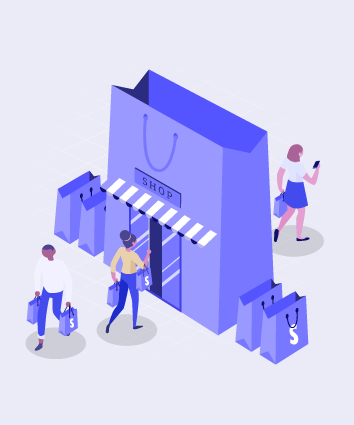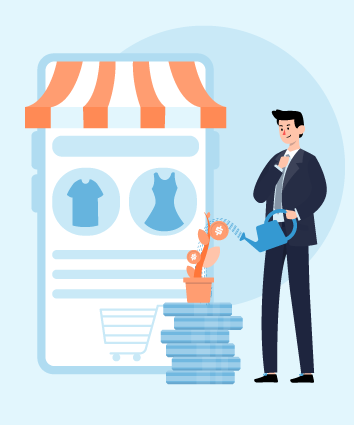
Top 10 Ways To Optimize Category Pages For eCommerce

Written by Nevil Bhatt
6 min read

eCommerce is growing faster than ever, and as the competition is being cutthroat day by day, it has become more important to optimize category pages for eCommerce sites in 2023.
As a general observation, the one thing that is often overlooked is category page optimization.
When product categories are overlooked, that’s a lot of missed opportunities because many people land on those specific pages from SERPs.
In simple terms, category pages are the main support system of eCommerce sites when it comes to ranking factors and SEO matters.
Incorporating a hierarchy adds more pages to a website while improving the chances of SEO opportunities.
Category pages are a way to optimize your products in the best way possible while making it easier for users to find the products in a quick way.
Not only that but category page optimization also supports the rich on-page SEO activities of your site.
Tips for Optimizing Your Category Pages for E-commerce
1. The First Step Of Optimization – Metadata
The basics of content optimization include title tags and meta descriptions.
One of the most influential on-page optimization elements is the title tag that sets the keyword theme of the page.
While meta descriptions influence the search terms for which a page ranks.
Title tags and meta descriptions are set in a site’s HTML code which is accessible from content management systems.
2. Let Headings Speak For Themselves
Another very important and visible part of a page is the headings.
Make sure that the headings and subheadings of your category pages are easy to understand for both users and search engines.
Optimizing heading tags of H1, H2, and so on will support search engines to figure out the context and content of a particular section.
H1 reinforces the title tag’s theme for the entire page, while H2 and H3 emphasize the supporting theme.
Additionally, confusing and repetitive headings make it harder for users to navigate through the page, and they will leave the site without taking any valuable action.
3. Keyword-based Content
You don’t need to add pages and pages of descriptions for your products. Include short and sweet descriptions of your products while including keywords in a natural way.
SEO-based content not only helps search engines understand the content and category of your page, but it will also help users to know what your products are about.
Remember one thing, don’t try to force the keywords in a sentence; otherwise, though it will make sense to search engines, it will provide no meaning and value to human readers.
4. Use Featured Content
Category pages can advertise sale items, loyalty programs, and related products that are relevant to the user and the category page to improve the user experience.
Moreover, feature content also supports organic search optimization too.
One needs to ensure that the feature’s descriptions are coded as text and not embedded in an image.
Though visual search has come a long way, it is still not used in search-ranking algorithms.
5. Link The Relevant Text
When you link a relevant text makes it more straightforward and a strong indicator for search engines while increasing the relevant traffic.
Linking irrelevant texts increases irrelevant traffic, which increases the rate of customers leaving pages without making any purchase.
6. Improve Category Navigation
The main intention of category filtering is to make it easier for buyers to find and purchase relevant products.
Nonetheless, category navigation also affects the indexation, authority, and relevance of each page in organic search results.
So, including relevant words in the navigation and filters will improve the rankings of a site.
Moreover, make sure that search engines can crawl the faceted navigation before you optimize; otherwise, all of your efforts will have no meaning.
7. Links In Header And Footer
Though there are some opportunities in category navigation as in the sitewide header and footer, including links to each eCommerce subcategory and filtered page in the header and footer may irritate users, and it seems over-optimized for search engine algorithms.
So the best option is to utilize header and footer links wisely and in accordance with category and subcategories pages.
Moreover, include pages based on keyword research and keyword mapping to get the best results.
Nonetheless, links to SEO-related keywords should not exceed the links for unrelated purposes, and long lists of links should never be placed in the text fields or below the footer.
8. Add Media Content To Your Products
Highlighting the products with visual media like photos, and videos and providing tutorial videos supports customers to envision the product in a more clear way.
Moreover, as long as they are high-quality images, it also supports SEO rankings.
9. Focus On UX
Ensure the simple purchasing product doesn’t involve too many complexities. Improving UX will make your customers return to your website in the future.
10. Category Descriptions
Including category, descriptions provide an opportunity to utilize the targeted keywords while sharing and highlighting information about the products. Category descriptions are a great way to make your page more SEO enriched.
Creative Ways to Optimize Content on Your Category Pages
Add Informational Pages As A Link
Including links to internal informational pages that are relevant to the products promoted on the page. Having a brief description of the linked page adds an overall volume of text on the category while providing a better chance to optimize anchor text.
Add Text In Small Fragments
As category pages have limited space for text, it is the best way to write in small snippets, making it easier to rank for a keyword with minimal copy.
Foldable Content
Making foldable content with “see more” and “see less” options allows you to add a substantial amount of information without overwhelming the users with a plethora of information.
FAQs and Shopping Guides
The Frequently Asked Questions section contains useful and valuable information, and it also allows keyword-rich text, making them perfect for the bottom of category pages.
Additionally, adding shopping guides to category pages also allows you to explain all the considerations while making a purchase.
If you are looking for any eCommerce web development or SEO solutions, you can contact us at hello@nflowtech.com, and we would be more than happy to help you out!!

Nevil Bhatt
Nevil is the owner of one of the fastest-growing digital marketing agency in India. Having a great knowledge of the IT field and business management, he decided to bring a revolution in the digital world by providing valuable and customised solutions across the globe. Whether it's real or digital, he knows how to handle sustainable relationships and meaningful interactions.



